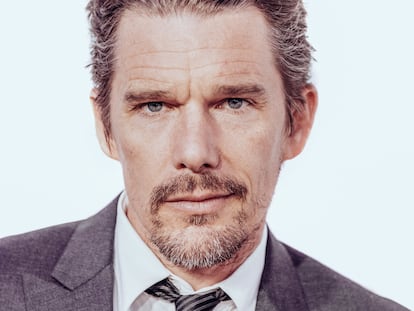‘I felt caged’: Jack Nicholson, Emma Watson, Bryan Cranston and other stars who decided to leave it all behind
The ‘Breaking Bad’ protagonist has announced his intention to dedicate less time to acting, putting him in a select group of stars like Gene Hackman who decided to step away

The actor Bryan Cranston has made public the date of the end of his career. In an interview in the magazine GQ, he mentioned that he is planning to retire in 2026, once he turns 70. He plans to escape to France with his wife to live a life without scripts and telephone calls. “For the last 24 years, Robin has led her life holding onto my tail. She’s been the plus one, she’s been the wife of a celebrity. She’s had to pivot and adjust her life based on mine. She has tremendous benefit from it, but we’re uneven. I want to level that out. She deserves it,” he says.
His declarations provoked a small cataclysm. Cranston has not spent his life in the spotlight. Fame reached him late, but just two roles —Hal, the disastrous father of Malcolm in Malcolm in the Middle (2000-2006) and Walter White in Breaking Bad (2008-2013)— have turned him into a beloved actor. The news of his planned retirement sparked so many headlines that he was forced to explain that he was not planning to retire completely, but take a pause in his career. “Hey everyone,” he wrote on his Instagram account. “Some news came out that wasn’t entirely clear… even to me. So I wanted to set the record straight. I am not retiring. What I am going to do is hit the pause button for a year after I reach my 70th birthday in 2026.” In the text, he again mentions that he owes his wife some time, and he adds that he believes that his career needs a reset, but he knows that his hyperactivity won’t let us miss him. “Several films are coming out soon that I’m very proud of, I am producing a few stories for TV that I really love, and I am circling my attention on returning to Broadway,” he added.
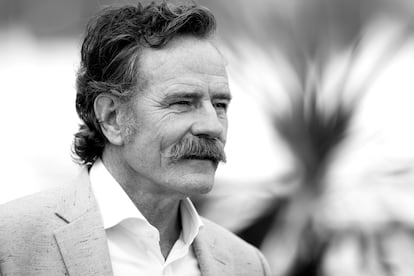
Rick Moranis, the protagonist of Little Shop of Horrors (1986), Honey, I Shrunk The Kids (1989) and Ghostbusters (1984), also took a break to focus on his family. After his wife’s death by breast cancer in 1991, he began moving away from the screen to take care of his two young children. By 1997, his presence was limited to dubbing. “I was working with really interesting people, wonderful people. I went from that to being at home with a couple of little kids, which is a very different lifestyle. But it was important to me. I have absolutely no regrets whatsoever. My life is wonderful,” he told The Hollywood Reporter in 2015. He rarely gives interviews, but he spoke at the insistence of Ghostbusters fans who hoped to find him again in the series’ remakes.
Just like Sigourney Weaver and Bill Murray, he received an offer to participate, but he declined the invitation: “I hope it’s terrific. But it just makes no sense to me. Why would I do just one day of shooting on something I did 30 years ago?” In the same interview, he denied that his retirement was definitive. “I took a break, which turned into a longer break. But I’m interested in anything that I would find interesting.” That role has arrived this year, thanks to Disney’s remake of Honey, I Shrunk the Kids. 26 years after his last film, we will once again see him as the inventor Wayne Szalinksi.
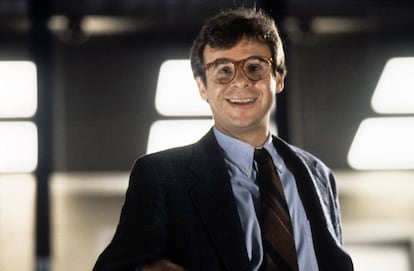
Cameron Diaz was not even conscious that she was not working until she mentioned it during a reunion with her castmates from The Sweetest Thing (2002). Since appearing in the 2014 remake of Annie with Jamie Foxx, she has not appeared in any movies. The protagonists of hits like My Best Friend’s Wedding (2011) and There’s Something About Mary (1998) was in the news more for her private life than her films. Her marriage with Benji Madden, guitarist in the group Good Charlotte, and her daughter became her principal activity. “I couldn’t imagine being a mother, now where I’m at, with my daughter in her first year, and having to be on a movie set that takes 14 hours, 16 hours a day away from her,” she said on the show Quarantined with Bruce. Diaz has combined motherhood with more laid-back hobbies, such as promoting her vegan wine, Avaline, and writing books about wellness. Eight years after her last role, her co-protagonist and friend Jamie Foxx convinced her to take to the spotlights again. At the end of the year, we will see her in the Netflix film Back in Action.

While Diaz was forced into retirement by the insignificance of her recent roles, Daniel Day-Lewis, her castmate in Gangs of New York (2002), was knocked out by the intensity of his own. During the production of My Left Foot (1989), in which he played Christy Brown, a painter with cerebral palsy, he learned to write and paint with his toes, which gave him his first Oscar and a hip injury. For The Last Mohican, he learned to track and skin animals and for Gangs of New York to throw knives. A career full of complex roles has given him three Oscars, but none of them shook him as much as that of Reynolds Woodcock from Phantom Thread (2018): “Before making the film, I didn’t know I was going to stop acting. I do know that Paul and I laughed a lot before we made the movie. And then we stopped laughing because we were both overwhelmed by a sense of sadness,” he told W Magazine. In 2017, after discussing it with his wife, the filmmaker Rebecca Miller, he released a statement announcing his retirement. He knew it was “uncharacteristic to put out a statement,” he said, “But I did want to draw a line. I didn’t want to get sucked back into another project.”
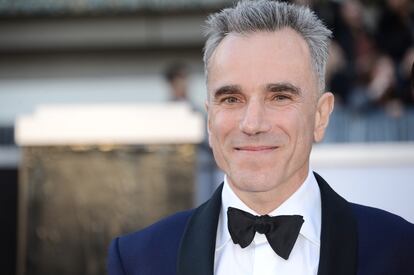
Debra Winger does not need a statement. Her exit from Hollywood was the subject of Rossana Arquette’s Looking for Debra Winger (2002), the documentary about how difficult it is for actresses to find good roles. One day Winger realized that all her peers looked younger than she did. “Michelle [Pfeiffer] and I are about the same age. We came up in the business together, but now she looks like my younger sister,” she told New York Magazine in 2002. She wasn’t interested in participating in a cosmetic surgery competition: the problem was the scripts, not the face that reflects her true age. In 1995, at 40 years old, at the peak of her career and after three Oscar nominations, the actress, acclaimed by the public and adored by critics (Pauline Kael described her as “a major reason to go on seeing movies in the eighties”), bade farewell to big productions. She returned sporadically with low-profile roles on television series like The Ranch (2016-2020), where she played Ashton Kutcher’s mother, and Mr. Corman (2021). The protagonist of Shadowlands (1993) says that, contrary to popular belief, it was not misogyny per se that drove her away from Hollywood, but the lack of interesting roles: “I stopped because I ceased being challenged,” she declared to The Telegraph.

Misogyny was the reason behind the career ending of the most successful stars in nineties cinema: Meg Ryan, the perfect mix of Judy Holliday and Carole Lombard, perhaps the most typecast actress in history, a genre in herself. In an interview with the New York Times, the actress said that her separation from Hollywood was “mutual,” though anyone who follows the gossip press knows her backstory. After years in a relationship with the unfaithful Dennis Quaid, once her marriage was already broken, Ryan’s relationship with Russell Crowe during the filming of Proof of Life took over the tabloids. Viewers never forgave her for not being a perfect girlfriend, either on or off the screen. And they didn’t forgive her for her aesthetic retouches, though they wouldn’t have stood to see her age, either.
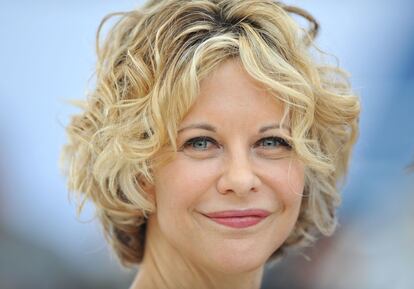
Audiences don’t like to see their idols age, as demonstrated by the disproportionate reaction to photos in which Gene Hackman is “unrecognizable,” meaning, in Hollywood language, that he looks his age: 93 years old. The surprise may come more from the fact that Hackman has stayed away from photos for the last two decades. The actor retired after growing fed up with all that stardom entails. “I haven’t held a press conference to announce retirement, but yes, I’m not going to act any longer. I’ve been told not to say that over the last few years, in case some real wonderful part comes up, but I really don’t want to do it any longer,” said the star of Mississippi Burning (1988). He decided to focus on writing, and since then, he has published three historical fiction novels with the archaeologist Daniel Lenihan and a few police novels, a vocation that he finds more relaxing. “I miss the actual acting part of it, as it’s what I did for almost 60 years, and I really loved that. But the business for me is very stressful. The compromises that you have to make in films are just part of the beast, and it had gotten to a point where I just didn’t feel like I wanted to do it anymore.”
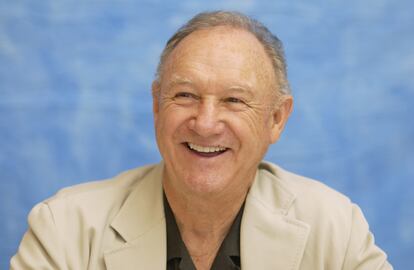
In 1971, after the premiere of Diamonds Are Forever, Sean Connery, who died in 2020, affirmed that “never again” would he play James Bond. Twelve years later, he starred in Never Say Never, as the adaptation of Operation Thunder was ironically named. In 2003, he opted to be less bombastic in retiring: he said goodbye with the failed The League of Extraordinary Men, an attempt to redeem himself from his refusal to play Gandalf, despite Peter Jackson’s insistence, and thus lose box-office earnings that would have surpassed $350 million. His Allan Quatermain was not memorable, but his Ramírez in Highlanders (1986) and his William of Baskerville in The Name of the Rose (1986), as well as his role as the charismatic father of Indiana Jones, were. Added to his disappointment at the film’s lack of success were a series of health problems, including the extraction of a benign tumor in his kidney. At the 2006 American Film Institute ceremony, in which he received a lifetime achievement award, he announced that he had retired forever.

One of the most-missed retirees in the industry is Jack Nicholson, although not everyone laments his absence. His ex-partner Angelica Huston recently confessed that she prefers to see him retired than in the kind of role that Robert De Niro plays. “I don’t want to see Jack doing Meet the Fockers,” she told Vulture. “If he’s not being offered anything as delicious as he has done in his past, why would he [keep working]? He has enough money to live three lifetimes more.”
Nicholson seems to think similarly. In 2013, three years after his last movie, the James L. Brooks comedy How Do You Know, he told The Sun that he didn’t have any memory problems. “I have a mathematician’s brain,” he said. He admitted having lost interest in acting. ‘I’m not going to work until the day I die. That’s not why I started,” he said. Since then, he has been followed by speculation about serious health problems, which seems to have been debunked by his recent return to his seat at the Lakers game.

The newest member of the retired actors club is Jim Carrey, who gave a surprising statement to Access Hollywood during the promotion of Sonic 2 (2022). “I’m going to retire,” he said, before adding, “probably.” He won’t close the door to the right project, though: “If the angels bring some sort of script that’s written in gold ink, that says to me that it’s going to be really important for people to see, I might continue down the road. But I’m taking a break.” The motives are the same as anyone’s: “I really like my quiet life and I really like putting paint on canvas and I really love my spiritual life and I feel like — and this is something you might never hear another celebrity say as long as time exists — I have enough. I’ve done enough. I am enough.”
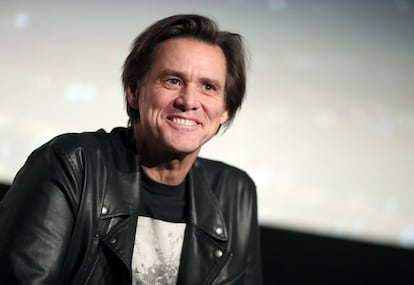
The need to take some time off isn’t just for veterans. Emma Watson, who played Hermione in Harry Potter, has not made a film since she finished Little Women in 2018. The actress has preferred to take some time away from acting. “I wasn’t very happy, if I’m being honest. I think I felt caged,” she told The Financial Times in an interview in which she talked about her new projects, among them the creation of an artisanal gin. She has not definitively left the industry: last year she directed a campaign for Prada, and she has said that she will act again. “But,” she added, “I’m happy to sit and wait for the next right thing.”
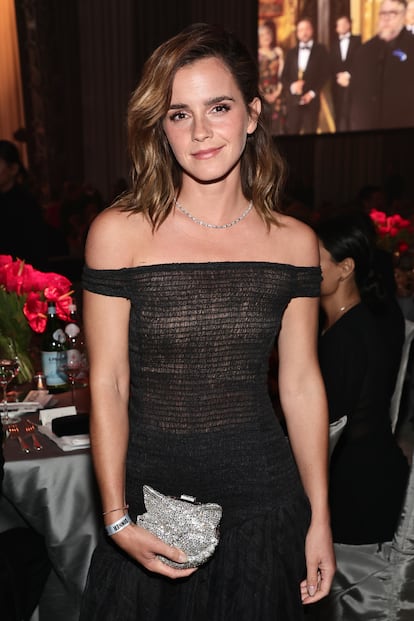
Sign up for our weekly newsletter to get more English-language news coverage from EL PAÍS USA Edition
Tu suscripción se está usando en otro dispositivo
¿Quieres añadir otro usuario a tu suscripción?
Si continúas leyendo en este dispositivo, no se podrá leer en el otro.
FlechaTu suscripción se está usando en otro dispositivo y solo puedes acceder a EL PAÍS desde un dispositivo a la vez.
Si quieres compartir tu cuenta, cambia tu suscripción a la modalidad Premium, así podrás añadir otro usuario. Cada uno accederá con su propia cuenta de email, lo que os permitirá personalizar vuestra experiencia en EL PAÍS.
¿Tienes una suscripción de empresa? Accede aquí para contratar más cuentas.
En el caso de no saber quién está usando tu cuenta, te recomendamos cambiar tu contraseña aquí.
Si decides continuar compartiendo tu cuenta, este mensaje se mostrará en tu dispositivo y en el de la otra persona que está usando tu cuenta de forma indefinida, afectando a tu experiencia de lectura. Puedes consultar aquí los términos y condiciones de la suscripción digital.
More information
Archived In
Últimas noticias
Most viewed
- Oona Chaplin: ‘I told James Cameron that I was living in a treehouse and starting a permaculture project with a friend’
- Sinaloa Cartel war is taking its toll on Los Chapitos
- Reinhard Genzel, Nobel laureate in physics: ‘One-minute videos will never give you the truth’
- Why the price of coffee has skyrocketed: from Brazilian plantations to specialty coffee houses
- Silver prices are going crazy: This is what’s fueling the rally

